Federal officials at the Environmental Protection Agency (EPA) have pulled the curtain behind Enbridge's effort to greenwash its tar sands pipeline spill into Michigan's Kalamazoo River. On the same day that Enbridge told its investors that its tar sands spill and cleanup had made the Kalamazoo River cleaner, EPA ordered the Canadian tar sands pipeline company to resume its cleanup of the Kalamazoo River after finding that submerged oil "exists throughout approximately 38 miles of the Kalamazoo." EPA's findings, based on technical analysis from prominent scientists from the international oil spill response and recovery community, stand in stark contrast with the alternate reality that Enbridge is selling to investors and the public. Enbridge's legacy in Kalamazoo was outlined by federal investigators as a company whose poor safety practices and failures to learn from past mistakes which resulted in the most expensive onshore pipeline disaster in U.S. history. The Canadian tar sands company's recent attempt to gloss over this reality with a public relations campaign reveals the company has yet to learn this basic truth -- simply saying something doesn't make it so.
EPA issued Enbridge with an enforcement action requiring the pipeline company to resume its two year cleanup in three sections of the Kalamazoo River. In these areas, totaling over five and a half miles of the Kalamazoo River, there is so much submerged oil that the river is spontaneously generating oil sheen and oil globules and in danger of spreading.
Even with EPA's new order, Enbridge will still leave oil contamination in over 32 miles of the Kalamazoo River, where officials believe that the dredging necessary to recover the oil would cause more damage than benefit. That means that after Enbridge finishes the cleanup that EPA has ordered, the company will leave tar sands in place throughout over 30 miles of the Kalamazoo River.
Enbridge's attempt to greenwash its impact on the Kalamazoo River speaks for itself. In a presentation to investors this week, the company provided three quotes from anonymous local residents, fisherman and river enthusiasts, who gush about what Enbridge's tar sands spill has done for the community.
Focus on Operations, Presented in Enbridge's 14th annual investment community conference Oct. 3, 2012
Who are these people and where do they come from? As part of our Voices Against Tar Sands, we talked to folks in Marshall, Mich. The people we talked to have names and stories to tell. It's worth listening to what folks like Susan Connolly and Debbie Miller have to say about what Enbridge's tar sands spill has done to their community.
This isn't the first time that Enbridge has opted to obscure a problem rather than address it. For instance, Enbridge's plan to ship tar sands in super tankers through British Columbia's sensitive inner coastal waters -- a treacherous maze of tightly packed rocky islands and reefs -- has generated a public uproar in the province. Enbridge's solution? The company broadened the Douglas Channel by erasing 400 square miles of offending islands on a map which it then promoted in a public relations campaign. Even if you look closely at the supertanker on Enbridge's map, it's hard to tell whether it's run aground on Hawkesbury Island or if it is still in Devastation Channel.
Enbridge's version of the Douglas channel compared to a scientists version, provided by SumOfUS
During the Kalamazoo River tar sands spill, Enbridge initially denied that tar sands was spilled. As Congressional and federal investigations began to uncover additional details on the spill, Enbridge CEO Patrick Daniel backtracked, saying:
No, I haven't said it's not tar sand oil. What I indicated is that it was not what we have traditionally referred to as tar sands oil. [...] If it is part of the same geological formation, then I bow to that expert opinion. I'm not saying, "No, it's not oil sands crude." It's just not traditionally defined as that and viewed as that. -- Patrick Daniels, Aug. 12, 2010
It was tar sands diluted with volatile natural gas liquid condensate, technically referred to as diluted bitumen.
And recently, a Canadian newspaper broke another Enbridge flip flop. During hearings before Canadian officials in May, Enbridge pitched the reversal of its line 9 pipeline as a means to provide conventional crude to Eastern Canada. In June, Enbridge officials responded to opposition to plans to establish the Trailbreaker pipeline system to ship tar sands through New England, saying "we have been absolutely clear that the company is not pursuing the Trailbreaker Project... I'm not sure what more we can say or how clearly we can say this." Belying Enbridge's denials, this week a U.S. Freedom of Information Act (FOIA) request by the Natural Resources Council of Maine uncovered that the Canadian Consulate has made presentations to the governor of Maine to promote the arrival of tar sands in New England. Is it possible that Enbridge doesn't traditionally view the Trailbreaker project the way the rest of the world does?
It's no wonder communities in the Midwest, New England, and British Columbia are balking at Enbridge's plans to build and expand its tar sands pipeline network through their groundwater and rivers.